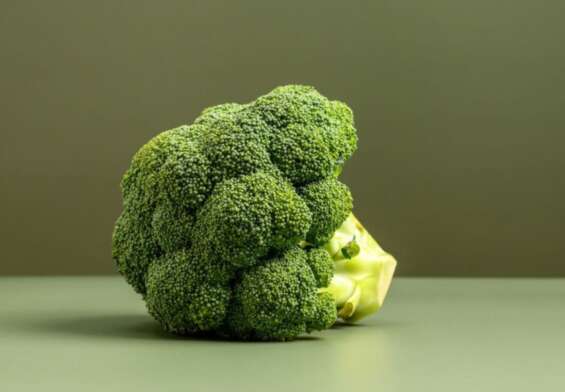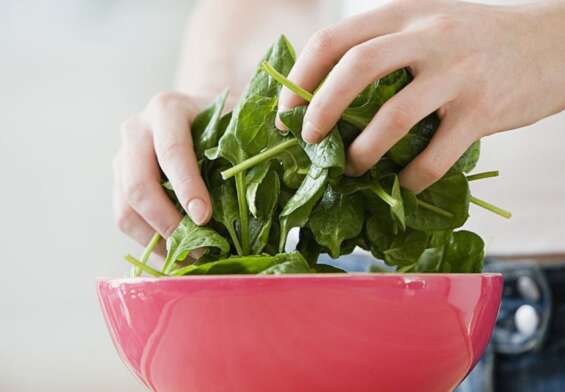
Low-Sulfur Diet: Managing Sulfur Sensitivity and Intolerance
A low-sulfur diet is a dietary plan that restricts foods high in sulfur. It is used to help reduce the symptoms of several health conditions, including allergies, asthma, and cystic fibrosis. This diet typically involves avoiding sulfur-containing foods, such as red meat, dairy products, eggs, and cruciferous vegetables, as well as processed foods that contain sulfites. It is important to discuss the low-sulfur diet with your healthcare provider, as it may interfere with the absorption of certain medications. With the right guidance and careful planning, a low-sulfur diet can be a safe and effective way to reduce symptoms and improve overall health.
Exploring the Benefits of a Low-Sulfur Diet
Are you tired of feeling sluggish and bloated after every meal? Do you wish there was a way to improve your overall health without making drastic lifestyle changes? If so, you should consider trying out a low-sulfur diet!
Sulfur is a mineral found in many of the foods we eat and it’s essential for the body to function properly. However, too much of it can lead to fatigue, bloating, and other uncomfortable symptoms. That’s why a low-sulfur diet is becoming increasingly popular among those looking to improve their overall health.
So, what kind of foods should you be eating on a low-sulfur diet? Generally speaking, you’ll want to stay away from foods that are high in sulfur such as shellfish, eggs, cheese, and red meat. Instead, opt for fresh fruits, vegetables, and lean proteins like fish, chicken, and legumes.
But don’t worry, going on a low-sulfur diet doesn’t mean you have to give up all the delicious foods you love. There are plenty of low-sulfur options that are just as tasty as their high-sulfur counterparts. For example, you can still enjoy oatmeal for breakfast, but switch out the cheese for a side of fresh berries. Or, you can make a delicious dinner by swapping out the steak for salmon and adding some roasted vegetables.
The benefits of a low-sulfur diet go beyond just feeling better after meals. Studies have linked sulfur-rich foods to increased risk of certain conditions like obesity, type 2 diabetes, and arthritis. By cutting down on your sulfur intake, you can reduce your risk of developing these conditions and improve your overall health.
So, if you’re looking for an easy way to improve your health, give a low-sulfur diet a try. Who knows, you may just find that you’ve stumbled upon the secret to feeling your best!
How to Identify Foods High in Sulfur
If you’re looking to up your sulfur intake, you’re in luck! We’ve got the scoop on the top ten sulfur-packed foods that you can add to your diet. Ready to get your sulfur on? Here we go!
Number one on the list is garlic, which is chock-full of sulfur. Not only is it a tasty addition to any dish, but it can also help keep vampires away! If you’re not a fan of garlic, don’t worry. There are other sulfur-rich foods you can choose from.
Second on the list is onions. These tear-inducing bulbs are full of sulfur and are a staple in many dishes. Plus, they make just about anything tastier.
Third is eggs. Not only are they a great source of protein, but they’re also high in sulfur. So the next time you’re making scrambled eggs, think about all the sulfur you’re getting!
Fourth is red meat, which has plenty of sulfur in it. Whether you’re grilling up a steak or making a burger, you’re getting a good dose of sulfur.
Fifth is fish, which is full of healthy fats and sulfur. It’s also a great way to get Omega-3’s.
Sixth is dairy, like yogurt and cheese, which are great sources of sulfur. So if you’re looking for a way to get more of this element, grab some dairy products!
Seventh is beans, which are an excellent source of sulfur and protein. So if you’re looking for a vegan-friendly option, beans are the way to go.
Eighth is Brussels sprouts, which are a great way to get your sulfur fix. They’re low in calories and high in taste, so they make a great side dish.
Ninth is nuts, which are full of healthy fats and sulfur. Whether you’re snacking on almonds or munching on walnuts, you’re getting a healthy dose of sulfur.
Last but not least is broccoli, which is a great source of both sulfur and fiber. So if you’re looking for a nutritious and delicious way to get your sulfur fix, broccoli is the way to go.
So there you have it! Now that you know which foods are high in sulfur, you can start adding them to your diet and get your sulfur fix!
Strategies for Avoiding High-Sulfur Foods
Try the New Math: If you’re struggling to keep track of which foods contain high levels of sulfur, try the new math – subtract the high-sulfur foods from your diet!
Go for the Green: When selecting produce, opt for green veggies such as broccoli, kale, and cabbage – these are low in sulfur.
Get Fishy: Fish and seafood are low in sulfur, so if you’re in the mood for something savory, try a salmon or shrimp dish!
Take the Low Road: Choose low-sulfur grains like quinoa, bulgur, and millet over high-sulfur ones like wheat, oats, and barley.
Say No to Processed Foods: Avoid processed foods, which tend to be high in sulfur.
Avoid Foul Odor-Causing Ingredients: Common high-sulfur foods include onions, garlic, and eggs.
Go Bananas: Bananas are naturally low in sulfur, so if you’re looking for a sweet treat, reach for a banana!
Make it Dried: Dried fruits such as apricots, raisins, and prunes are all low in sulfur.
Choose Your Dairy Carefully: Dairy products like cheese and yogurt contain high levels of sulfur, but milk and cream are generally low.
Get Creative in the Kitchen: With a bit of creativity and some high-sulfur-avoiding tips, you can still enjoy a variety of delicious meals!
Recipes For Delicious Low-Sulfur Dishes
Kale Caesar Salad: Let’s start off with a classic. This salad is a great way to get your daily greens without having to worry about sulfur. All you need is some kale, croutons, parmesan cheese, olive oil, lemon juice, garlic, salt, and pepper. Feel free to add other veggies like tomatoes or cucumbers too!
Roasted Chickpeas: Chickpeas are a great source of protein, and they’re low in sulfur. Roast them in the oven with some olive oil, garlic, and your favorite herbs for a delicious and crunchy snack.
Quinoa Bowls: Quinoa is an amazing grain that’s packed with protein and low in sulfur. Mix up your favorite veggies and top it off with some diced avocado and a drizzle of olive oil for a tasty and healthy meal.
Zucchini Fritters: If you’re looking for something a bit more indulgent, try these zucchini fritters. They’re a great way to get your veggies in while still satisfying your cravings. Just mix up some grated zucchini, eggs, and some herbs, and fry them in some hot oil.
Eggplant Parmesan: Eggplant is a great low-sulfur vegetable that’s full of flavor. Top it off with some cheese and marinara sauce, then bake it in the oven for a delicious meal. Serve it with some pasta or over a bed of greens for a complete dinner.
Sweet Potato Fries: Who doesn’t love some crispy fries? Sweet potatoes are a great low-sulfur vegetable that can be made into delicious french fries. Just slice them up and bake them in the oven with some olive oil and herbs for a tasty treat.
Veggie Burgers: Veggie burgers are a great way to get your protein without all the sulfur. Make your own using black beans, quinoa, and some spices or buy store-bought veggie burgers for an easy meal.
Coconut Curry: If you’re in the mood for something spicy, try this coconut curry. It’s packed with flavor and has very low levels of sulfur. Just mix up some coconut milk, curry paste, and your favorite veggies and simmer until it’s ready. Serve it with some rice or your favorite grain for a complete meal.
The Role of Sulfur in the Body and How to Balance It
Sulfur is an overlooked but essential component of life on Earth. It may not get the same amount of attention as other elements like oxygen or carbon, but it’s just as important in maintaining good health. So don’t let sulfur be the forgotten nutrient in your diet! Here’s what you need to know about how sulfur affects the body and how to balance it.
First, let’s talk about what sulfur does for the body. It’s a component of several amino acids, including methionine and cysteine. These are both essential for healthy cell growth, metabolism, and the production of energy. Sulfur also helps to form connective tissue, improve skin health, and prevent stomach acid from damaging the lining of the digestive tract.
Now, how can you make sure you’re getting enough sulfur? The answer is simple: eat more sulfur-rich foods! You can find sulfur in a variety of foods like eggs, fish, poultry, dairy products, beans, nuts, and whole grains. It’s also found in garlic and onions, which is great news for those who love Italian food!
Finally, you can also take a sulfur supplement if you need an extra boost. However, it’s important to talk to your doctor before taking any supplement to make sure it’s safe for you.
So there you have it – the role of sulfur in the body and how to balance it. Remember: sulfur isn’t just for stinky farts – it’s an essential nutrient for keeping your body healthy and strong!
Understanding the Difference Between Sulfates and Sulfites
Do you know the difference between sulfates and sulfites? If not, don’t worry–you’re not alone! It’s a common source of confusion, and it’s understandable why. After all, they both sound very similar. But don’t let their similar names fool you–these two substances are actually quite different.
Let’s start with sulfates. These are compounds made up of sulfur, oxygen, and another element, like sodium or magnesium. They’re often used as cleansing agents in shampoo and other beauty products, and can also be found in detergents, toothpastes, and other cleaning products.
Sulfites, on the other hand, are compounds made up of sulfur and oxygen. They’re most commonly used as preservatives in foods and drinks, and can also be found in some medications. They can cause allergic reactions in some people, so it’s important to read labels and be aware of which products contain them.
So there you have it: sulfates and sulfites are two different substances that are often confused. Now that you know the difference, you can impress your friends and family with your newfound knowledge!
The Link Between Low-Sulfur Diets and Improved Health
Do you feel like you’re always fighting off a cold, or just generally feeling under the weather? Well, it might be time to try something a bit different: a low-sulfur diet! That’s right, say goodbye to those sulfur-rich snacks and dishes and get ready to enjoy some new, healthier alternatives. The link between low-sulfur diets and improved health is undeniable, so why not give it a try?
First things first: what exactly is sulfur? You might be familiar with sulfur as the smelly stuff that comes out of volcanoes, but it’s also found in a lot of everyday foods. Sulfur is found in many different types of foods, including eggs, cabbage, fish, and onions. So, if you’re looking for a way to improve your health, cutting down on these foods is a good place to start.
But why exactly is a low-sulfur diet so important? Well, sulfur can contribute to a variety of health problems, such as headaches, joint pain, and fatigue. It can also lead to an increased risk of chronic inflammation, which is linked to a variety of other health issues. Cutting down on your sulfur intake can help reduce these risks and lead to a more balanced, healthier lifestyle.
Of course, it’s not as easy as just cutting out sulfur-rich foods. You’ll need to make sure you’re eating enough of the other essential vitamins and minerals, such as iron, magnesium, and zinc. Fortunately, there are plenty of delicious low-sulfur alternatives out there, such as nuts, beans, and legumes. So, why not give it a try and see how you feel?
It’s time to stop putting up with all those niggling health issues and give a low-sulfur diet a go! Who knows, maybe you’ll find that you have more energy and feel better than ever before!
Foods to Embrace on a Low-Sulfur Diet
Are you on a low-sulfur diet and feeling a bit, well, blue? Fear not, there are still plenty of delicious and nutritious foods you can enjoy! Here are some of the best low-sulfur diet foods that’ll have you feeling like you’re living the high life:
Fruits: Fruits are a great way to get your fill of vitamins and minerals without all the sulfur. Apples, oranges, bananas, and grapes are all great options!
Vegetables: Vegetables can be a great way to get your daily fill of fiber without all the sulfur. Carrots, celery, broccoli, and spinach are all great options.
Grains: Grains are a great way to get your daily dose of carbohydrates without all the sulfur. Oats, quinoa, and brown rice are all great options.
Legumes: Legumes are a great source of protein and fiber without all the sulfur. Lentils, chickpeas, and black beans are all great options.
Dairy: Dairy is a great way to get your daily dose of calcium without all the sulfur. Milk, cheese, and yogurt are all great options.
Fish: Fish is a great way to get your omega-3 fatty acids without all the sulfur. Salmon, tuna, and cod are all great options.
Nuts: Nuts are a great way to get your daily dose of healthy fats without all the sulfur. Almonds, walnuts, and cashews are all great options.
So, don’t let a low-sulfur diet bring you down – there are plenty of delicious and nutritious options you can still enjoy!
Foods to Avoid on a Low-Sulfur Diet
If you’re embarking on a low-sulfur diet, you’d better say goodbye to some of your favorite delicious dishes! Here are some of the most noteworthy foods that you should avoid on a low-sulfur diet:
French Fries – Who doesn’t love crispy, golden French fries? On a low-sulfur diet, however, they’re a definite no-no.
Pizza – One of the greatest culinary gifts from Italy, pizza is a big no-no on a low-sulfur diet.
Popcorn – Popcorn is a great snack, but unfortunately, it’s high in sulfur, so you’ll have to say goodbye to this snack favorite.
Fried Chicken – Fried chicken is definitely a delicious treat, but it’s loaded with sulfur. So, if you’re on a low-sulfur diet, you’ll have to find other ways to satisfy your craving for fried chicken.
Bacon – Bacon lovers, beware! Bacon is high in sulfur, so it’s off the menu.
Pickles – Pickles are a great way to add flavor and crunch to a meal, but they’re loaded with sulfur, so you’ll have to steer clear of them.
Chocolate – Chocolate is one of the most beloved treats, but it’s high in sulfur. So, you’ll have to find other ways to satisfy your sweet tooth.
Cheese – Cheese can be a great addition to many dishes, but unfortunately it’s off-limits on a low-sulfur diet.
Eggs – Eggs are a great source of protein, but they’re high in sulfur, so you’ll have to find other sources of protein if you’re on a low-sulfur diet.
Red Meat – Red meat is a great source of protein and iron, but it’s high in sulfur, so it’s off the menu.
So, if you’re on a low-sulfur diet, you’ll have to say goodbye to some of your favorite dishes. But don’t worry, there are still plenty of delicious options that you can enjoy!
Tips For Eating Out on a Low-Sulfur Diet
Remember that you don’t need to tell the entire restaurant why you’re on a low-sulfur diet. There’s no need to cause yourself unnecessary embarrassment. Just order something that fits your dietary needs!
If you’re looking for a more interesting dining experience, try to find restaurants that specialize in low-sulfur dishes. You’ll be sure to find something that’s both delicious and healthy.
Look for restaurants that serve dishes with vegetables or other natural ingredients. These dishes are usually lower in sulfur and healthier for you overall.
If you’re in a hurry, try ordering a salad. Many salads are made with ingredients that are naturally low in sulfur, such as lettuce, tomato, and cucumber.
When in doubt, ask your server for advice. They may be able to suggest dishes that will fit your dietary requirements.
Finally, don’t forget to enjoy yourself! Eating out doesn’t have to be a chore when you’re on a low-sulfur diet. With a bit of creativity, you can find dishes that taste great and meet your dietary needs.
How to Adapt Your Kitchen to a Low-Sulfur Diet
Are you ready to take your kitchen game to new heights? If you’re looking to adapt your kitchen to a low-sulfur diet, you’ve come to the right place! We’re here to help you make the most delicious and nutritious meals without all the sulfur. Here’s how to get started:
First, get familiar with sulfur-containing foods. Foods like eggs, dairy products, processed grains, and certain veggies are all high in sulfur. Stock up on low-sulfur alternatives like oatmeal, quinoa, legumes, and leafy greens.
Next, find ways to reduce sulfur in your cooking. Boiling and steaming are great ways to reduce sulfur-containing compounds in the foods you eat. If you’re boiling, make sure to discard the water afterwards as it will contain sulfur.
Finally, get creative with your choices. There are plenty of delicious and nutritious low-sulfur foods out there. Try out some unique recipes, like a cauliflower-potato mash or a tempeh stir-fry. You can also experiment with incorporating herbs, spices, and alternative sweeteners into your dishes for an extra flavor kick.
With a bit of creativity and a dash of determination, you can turn your kitchen into a low-sulfur cooking paradise! So, don your chef’s hat and get ready to whip up some delicious, sulfur-free meals. Bon appétit!
Conclusion
The low-sulfur diet has been proven to be beneficial for those with chronic kidney disease, as it helps to reduce the amount of toxins in the body. This diet can also be beneficial for those who are looking to improve their overall health and reduce their risk of developing certain diseases. By reducing the amount of sulfur-containing foods in the diet, people can experience improved health, better energy levels, and improved overall health. It is important to speak with your physician before beginning any dietary changes, as they can provide guidance and advice on what types of foods are best for you.











